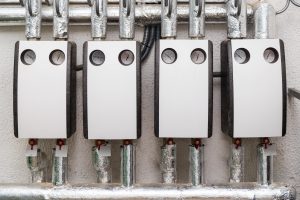How to Maintain Your Home's Water Pump
 When you think about home maintenance, your mind probably doesn’t jump straight to the water pump. However, it’s an essential part of your home’s plumbing that needs to be kept in check. A water pump is an electric or mechanical device that helps raise water from a source and deliver it to the rest of your home. These pumps are usually located underground and are exposed to rain, leaves, dirt and other debris. As such, they need constant care and attention to ensure they keep working efficiently. Here are some tips on how you can maintain your home’s water pump, keeping it in good condition for as long as possible.
When you think about home maintenance, your mind probably doesn’t jump straight to the water pump. However, it’s an essential part of your home’s plumbing that needs to be kept in check. A water pump is an electric or mechanical device that helps raise water from a source and deliver it to the rest of your home. These pumps are usually located underground and are exposed to rain, leaves, dirt and other debris. As such, they need constant care and attention to ensure they keep working efficiently. Here are some tips on how you can maintain your home’s water pump, keeping it in good condition for as long as possible.
Change Out the Filters
The filters inside your water pump are essential for its operation. They catch any debris before it can reach the rest of your home. Unfortunately, these filters will need to be replaced over time. This will depend on how often the pump is used and the quality of the water, but you can expect to change them after a year or two. It’s important to change out your water pump’s filters as soon as they clog up, as this will affect its efficiency. This will also reduce the strain on your pump, extending its life. Filters are fairly cheap and easy to replace, so you should do this every year as part of your home maintenance.
Maintain the Float and Valve
The float and valve are an important part of your water pump. The float is used to determine the water level and turn the pump on and off accordingly. As such, debris can easily get caught in the float, reducing its effectiveness. Try to clean the float with water and a soft cloth. The valve can also get clogged, reducing the water flow and causing the pump to work harder. The best way to clean the valve is to use a wire brush. This will allow the water to flow more freely, preventing the pump from being overworked.
Check the Shaft Seal
The shaft seal is an important part of your water pump. It ensures the water doesn’t escape while the pump is in use. If the shaft seal goes faulty, there’s a chance the pump will overheat and break down. This makes it important to check the condition of the shaft seal every year. There are a few ways you can do this. One is to use a flashlight and look for any cracks or tears in the seal. Another option is to place some soapy water on the seal; bubbles will appear if there’s a problem with the shaft seal. If you notice any issues with the shaft seal, you should contact a plumber to have it replaced.
Check the Motor Bearings
A water pump has two types of bearing: thrust and radial. Radial bearings are located at the top of the motor and help to reduce vibration. Thrust bearings are located at the bottom of the motor, helping it to spin smoothly. Both these bearings need to be regularly maintained. To check them, first, remove the pump from the ground. Next, remove the covers to the back of the pump. Finally, use a flashlight to look inside the pump and check that the bearings are smooth and clean. If they aren’t, use a small brush to clean them out.
Rotate the Housings
Your water pump is housed in a casing, which is fixed in place. Over time, dirt and debris can get lodged in these housings, reducing the pump’s efficiency and increasing the risk of breakage. To prevent this, you should regularly rotate the housings. You can do this manually, or you can buy a rotating device to make the job easier. Rotating the housings should be part of your home maintenance routine. It’s best to do this some time between spring and fall, when the weather is mild. You’ll know the job is done when there are no more bubbles in the water.
Conclusion
A water pump is an essential part of your home’s plumbing. When maintained properly, it will keep your home supplied with water from the source. However, it’s important to keep in mind that water pumps are exposed to rain, leaves, dirt and other debris. This can easily clog up filters and reduce the pump’s efficiency. That’s why you should check the condition of your pump every year and replace the filters as soon as they clog up. You should also clean the float and valve, check the shaft seal, and clean the motor bearings. Finally, you should rotate the housings to keep them free of debris.
